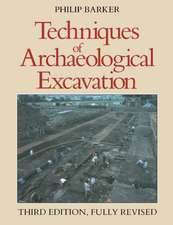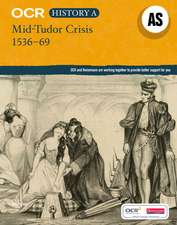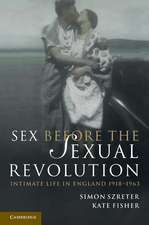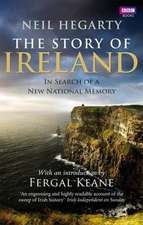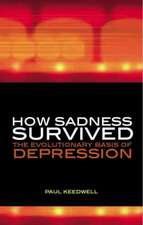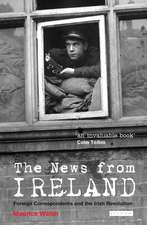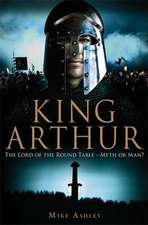Hen Domen, Montgomery: A Timber Castle on the English-Welsh Border:A Final Report
Autor Philip Barker, Robert Highamen Limba Engleză Paperback – 30 noi 2000
The motte and bailey castle at Hen Domen, Montgomery was occupied from the late eleventh century until c.1300. Excavations here lasted from 1960 to 1992 and remain the most detailed examination of this type of site to date. This volume marks the final stage in the publication of excavations and fieldwork carried out at the site, containing a summary of an earlier work published in 1982 by the Royal Archaeological Institute and a full account of the project's findings since 1980.
Its principal contents are the buildings whose foundations were recovered in the bailey and on the motte, the artefactual and environmental evidence and the castle's medieval landscape context. The book is profusely illustrated with drawings and photographs, including artist's reconstructions of the evolution of the site.
Preț: 656.16 lei
Preț vechi: 810.06 lei
-19% Nou
Puncte Express: 984
Preț estimativ în valută:
125.55€ • 131.44$ • 103.89£
125.55€ • 131.44$ • 103.89£
Carte tipărită la comandă
Livrare economică 05-19 aprilie
Preluare comenzi: 021 569.72.76
Specificații
ISBN-13: 9780859896528
ISBN-10: 0859896528
Pagini: 192
Ilustrații: 25 b-w halftones and 60 line drawings
Dimensiuni: 295 x 155 x 11 mm
Greutate: 0.8 kg
Ediția:1
Editura: Liverpool University Press
Colecția Liverpool University Press
Locul publicării:United Kingdom
ISBN-10: 0859896528
Pagini: 192
Ilustrații: 25 b-w halftones and 60 line drawings
Dimensiuni: 295 x 155 x 11 mm
Greutate: 0.8 kg
Ediția:1
Editura: Liverpool University Press
Colecția Liverpool University Press
Locul publicării:United Kingdom
Notă biografică
The late Philip Barker was formerly Reader in British Archaeology, University of Birmingham. He has directed a number of excavations and published several books. Robert Higham is Senior Lecturer in Archaeology, University of Exeter. His research interests cover two broad topics relating to the medieval period: the general theme of defence, in both its military and social aspects, and the medieval archaeology of South West England. He has directed a number of excavations and published several books.
He has particular interests in the interplay between archaeological and historical data in the medieval period. Specific areas of research include urban defence, the archaeology, social and settlement history of castles and castle-building society, and the settlement history of Greater Exmoor.
He has particular interests in the interplay between archaeological and historical data in the medieval period. Specific areas of research include urban defence, the archaeology, social and settlement history of castles and castle-building society, and the settlement history of Greater Exmoor.
Recenzii
“All told, this a report that maintains the standard of an exemplary excavation. It is a stimulating and enjoyable read, and a fitting tribute to Philip Barker, whose enthusiasm, integrity and penetrating mind inspired so many of us who knew him.” –Antiquity, Sept 2001
“The authors express the hope that they have made a solid contribution to the study of castles and also to medieval archaeology in general. There can be little doubt that this is indeed the case and, given the current state of funding for research excavation, Hen Domen will remain our most detailed example of the development of a motte and bailey castle for many years to come . . . In a series of highly readable, genuinely reflective and well illustrated chapters the development of the castle is brought to life in a discussion that is happily free of unnecessary jargon . . . a readable, reflective and well-illustrated piece of work that will stand the test of time.” –Landscape History, 2001
“This is a very readable excavation report with a strong touch of humanity. As well as the main contributors, the local community played its part, and continues to do so with the display of the site model and exhibits in 'The Bell', the visitor centre of the Montgomery Civic Society. The spirit of the excavation and its team pervades the text, and is recognised by the photographs of camp life among the final pages.’” –Archaeological Journal, Vol. 158, July 2001
“The authors deserve our thanks for seeing this well-produced report to publication, as indeed does Exeter University Press for publishing it. It is an expensive volume compared to other excavation reports published recently as monographs, but it is a book that should be on the shelves of anyone interested in the history of the Welsh borderland, let alone students of castle history.” –Archaeology in Wales, Vol. 40, 2001
“This is a book I would like to see in the hands of anyone involved in archaeological excavation, but most especially students approaching the trenches for the first time, shiny trowel at the ready. This is what excavation should be about: digging and recording to the highest standards, intellectual rigour and transparency, an appreciation that a complex site can only begin to be understood within its landscape by constantly revisiting it, and sheer dedication. In fact, it is the antithesis of much that passes for excavation today . . . As well as being important, it is attractively and well produced – the quality of the drawings and photographs, and their integration with each other and the text is exemplary – with a charm and personality entirely missing from so many reports . . . When the history of medieval archaeology is written, this site and its excavations will feature prominently.” –Medieval Archaeology, Vol. 45, 2001
“Two features lift this above the usual range of excavation reports – the reconstruction drawings of the phases of the castle by Peter Scholefield, which are already classics, and the “photographic memoir” at the end. We all have collections of informal excavation photographs never intended for publication, but it takes a Philip Barker to realize that these were already an historical document in their own right, recording what that threatened, and well nigh extinct species, a large-scale volunteer-based excavation, looked and felt like to those taking part.” –Antiquaries Journal, Vol 81



